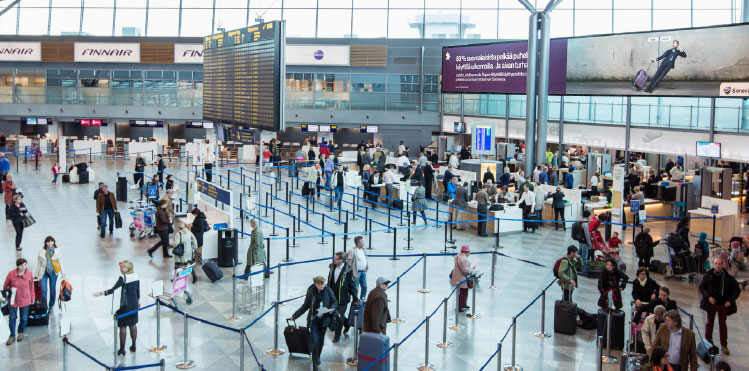
Kari Savolainen, CEO Finavia: “Studies show that one third of passengers choose their flight route based on the transfer airport. In order to keep up and maintain our strong position in the tough competition, we must develop and improve all the time. Our investments will ensure that Helsinki Airport will maintain its position as a major player in the toughening competition for international transit passengers.”
Finavia’s CEO Kari Savolainen explained to Amy Hanna how Helsinki’s unique geographic positioning, unparalleled connections and exceptional passenger journey set it apart from others on Europe’s aviation landscape.
Propelled by the growth of its capital’s flourishing gateway, Finland’s is a network of connectivity that extends across the world with admirable breadth. When compared to its population of 5.4 million, the vast scale of Finland’s web of direct links to more than 130 destinations seems especially conspicuous, while the prominence of the air transport industry in the nation is evident in its 4.7 airports per million people – a number considerably greater than the European average of one.
In the battle between its hubs for dominion over the European air transport enclave, Helsinki’s strength lies in its ideal geographical location. The airport is northern Europe’s leading hub in transfer traffic between Europe and Asia, and facilitates the shortest route between the two continents, which together with its swift transfer times and smooth transit processes, delivers a streamlined experience for its passengers, and makes Helsinki a formidable contender in the fray.
Finland’s robust air transport infrastructure is of much importance to the country’s economic prosperity. Its relative remoteness means that its international connectivity is a key factor in the growth of the electronics, engineering, manufacturing and biotechnology industries on which its economy thrives, and as well as enabling these businesses to sustain their competitiveness in the global market place, aviation is also a significant financial contributor to Finland’s wealth. A study commissioned by IATA in 2012 found that air transport contributed €5,830 million (3.2%) to the Finnish GDP, and supported more than 100,000 jobs, while in the same year it contributed €2.5 million to the government in tax.
16 million passengers passed through Helsinki Airport last year, of which four million comprise of the highly mobile, and largely affluent, Finnish public and the 23 regional airports across the country that use Helsinki as a transitional focal point. The other 12 million travellers that make up its throughput are partially those passengers who come to the airport from its wider catchment – Sweden, Norway, Denmark and Germany, and Baltic states such as Estonia, Lithuania, Latvia, and the St Petersburg region of Russia – and of the millions of passengers that rely on the gateway as a connecting point between Asia and Europe. Together, these three passenger flows create an attractive environment for Helsinki Airport’s airline customers, and Finavia’s strategic direction continues towards the fortifying of its market share in traffic between the two continents, with its primary source of growth remaining in Asia-Europe transit travel.
A rising, resilient hub
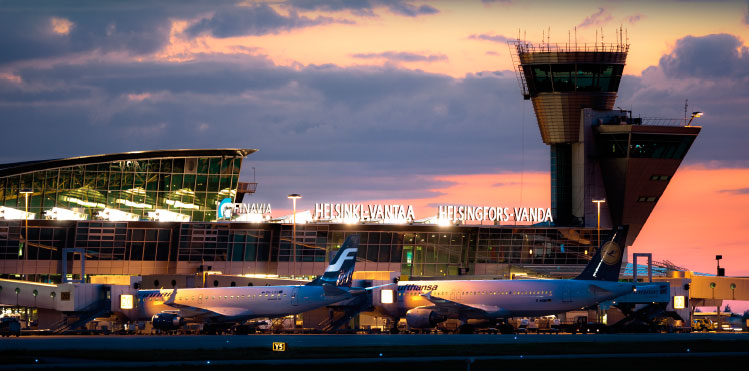
Despite surrounding competition in the form of Europe’s busiest air transport gateways, Helsinki is a rising, resilient hub, abundant in power and potential that is only growing with the booming Asian market (from which it serves two million passengers a year). The airport is differentiated by the cooperation of its comprehensive hub-and-spoke system – far-reaching narrow-body connections to Europe – and its extensive long-haul network to Asia and the US. At present the airport directly serves 15 destinations in Asia, and it is this connectivity that makes its role in European aviation such a pivotal one – neighbouring hub Stockholm Arlanda currently serves two.
“Helsinki is very different from the traditional European hub, and one thing that makes us stand out is our transfer times and the fact that our flight schedules have been optimised here to suit the Helsinki passenger,” explained Kari Savolainen, CEO Finavia, operator of Helsinki Airport. “Because all of our airport facilities are under one roof and we have a compact, but densely active, system here, we can guarantee short transfer times – and easy navigation.”
Helsinki’s position as a sturdy hub between Europe and Asia also means that its operations are angled towards its transiting passengers in a way that is quite unique within the region. As well as working to bolster its connections in the East, Savolainen asserted that a key priority for the airport is optimising its direct links between the two continents, so that service frequencies are most suited to its airlines and passengers. “Compared to other European hubs, the transfer process is a real priority for us,” Savolainen said. “When passengers choose Helsinki they have really good connections within the air that really suit them, because at Helsinki we have designed our network so that whenever you arrive at the airport from say, Asia, you have available more or less all parts of Europe to which we are connected. Our connections on the ground are designed to suit them too. A traveller can transfer in as little as 35 minutes compared to the two hours it takes to transfer through Europe’s larger hubs.”
Finavia will soon be celebrating two years since the inauguration of the JAL Helsinki-Tokyo route – a milestone connection that operates four times daily alongside Finnair’s daily Japan flights to Tokyo, Osaka and Nagoya. The landmark service makes Helsinki the fourth biggest European airport in air traffic between Japan and Europe and, Savolainen said, there is a pool of potential that springs from its connectivity to that part of the world. “If you take a map, for example, from Tokyo to Sao Paulo, the shortest route between the two is via Helsinki. And nobody flies that. Of course you need to transfer here in Helsinki, to change aircraft, but that’s a great example of just how much opportunity there is here.”
“But,” he furthered, “I think where most of our ambition currently lies is in maintaining our position as an efficient airport from the point of view of both airlines and the passenger. And we want to offer a first-class transfer experience in Helsinki by 2020, when all of our developments will be in place, and that is now what we are planning.”
The transformation of Helsinki Airport
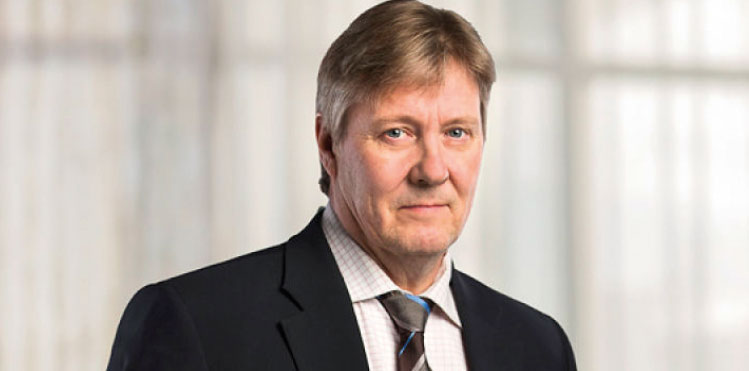
Kari Savolainen, CEO Finavia: “Helsinki is very different from the traditional European hub, and one thing that makes us stand out is our transfer times and the fact that our flight schedules have been optimised here to suit the Helsinki passenger.”
Finavia is now embarking on the far-reaching renovation of Helsinki Airport’s facilities, and earlier this year launched an all-encompassing €900 million development programme that will see developments made throughout its infrastructure and operations between 2014 and 2020, when the airport’s objective is to serve 20 million passengers a year. “The aim,” Savolainen explained, “is to ensure maintaining Helsinki Airport‘s strong competitive position, especially in transfer traffic between Europe and Asia, and maintain good flight connections in Finland. We also want to provide our airline customers the kind of facilities and capacity where they can focus on growing their business.”
The operator’s plans to increase transfer traffic capacity at the airport are based on a ‘one-roof concept’ – the creation of all of its new services within the singular terminal building. “This way many of our strengths as a relatively small and compact airport, such as short distances and easily accessible services, can be maintained to continue providing a customer-friendly airport experience,” Savolainen added. “Transferring from one gate to another is easy and quick, as it will be done in one terminal.”
Helsinki Airport’s development programme and terminal expansion will be executed in phases, enabling Finavia to react as flexibly as possible to potential changes in the aviation market as time progresses. The first phase is focused on increasing transit traffic capacity, during which facilities for long-haul passengers will be expanded and aircraft stands for wide-bodied aircraft increased. Planning and preparatory work will take most of 2015 to complete, and construction work is expected to start in 2016.
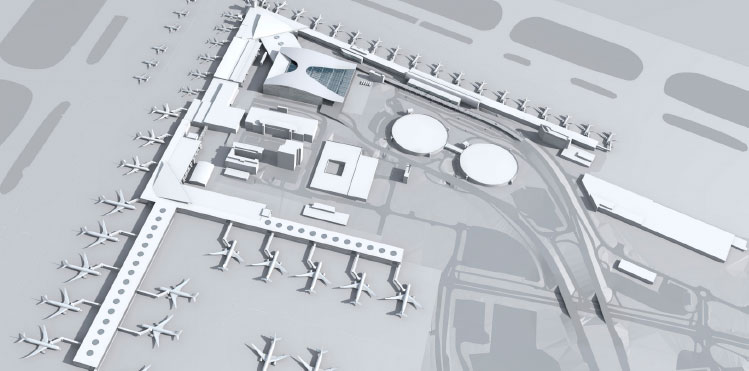
Helsinki Airport’s €900 million development programme and terminal expansion will be executed in phases, enabling Finavia to react as flexibly as possible to potential changes in the aviation market as time progresses. The first phase is focused on increasing transit traffic capacity, during which facilities for long-haul passengers will be expanded and aircraft stands for wide-bodied aircraft increased.
In the second stage of the development the transit capacity of the airport will be further increased, and the service level for European and domestic flights improved. The third phase, meanwhile, focuses on expanding Terminal 2 to cover the ground traffic area. “The plan is to build one concentrated departure/arrival hall,” Savolainen explained. “Expanding the facilities to the area in front of the terminal allows us to overhaul commercial services, and parking and public transport arrangements. Related to this, we are currently extending one of our parking garages to provide Helsinki Airport with 3,000 additional parking spaces in 2016.”
“Studies show that one third of passengers choose their flight route based on the transfer airport,” he continued. “In order to keep up and maintain our strong position in the tough competition, we must develop and improve all the time. Our investments will ensure that Helsinki Airport will maintain its position as a major player in the toughening competition for international transit passengers.”
Self-service bag drop expands at Finavia’s airports
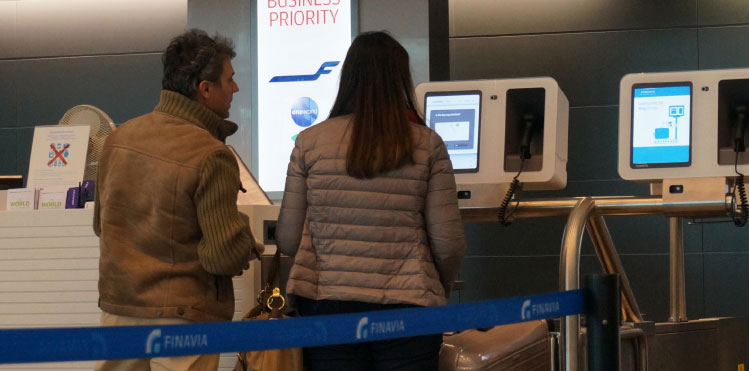
Finavia is continuing to expand its self-service bag drop facilities for its passengers. Since May 2014 passengers at Helsinki Airport, and from September 2014 Oulu Airport, have had the opportunity to use Type22’s innovative Scan&Fly technology to check in their hold baggage. Turku Airport has become the third airport to adopt the technology, and will now offer the Type22 Self Bag Drop service to passengers flying with Finnair. “Customers are accustomed to handling many stages of their journey independently,” said Johanna Bagge, Director Customer Service, Finnair. “Self-service check-in, for instance, is already used by over 80% of Finnair’s customers. Dropping off baggage at a self-service bag drop unit reduces the customer’s queuing time at the airport and speeds up the start of the journey.” Self Bag Drop by Type22 is installed worldwide at more than 15 airports, and offers passengers of over 35 airlines the best self bag drop experience, establishing Type22 as one of the world’s leading self bag drop suppliers.







